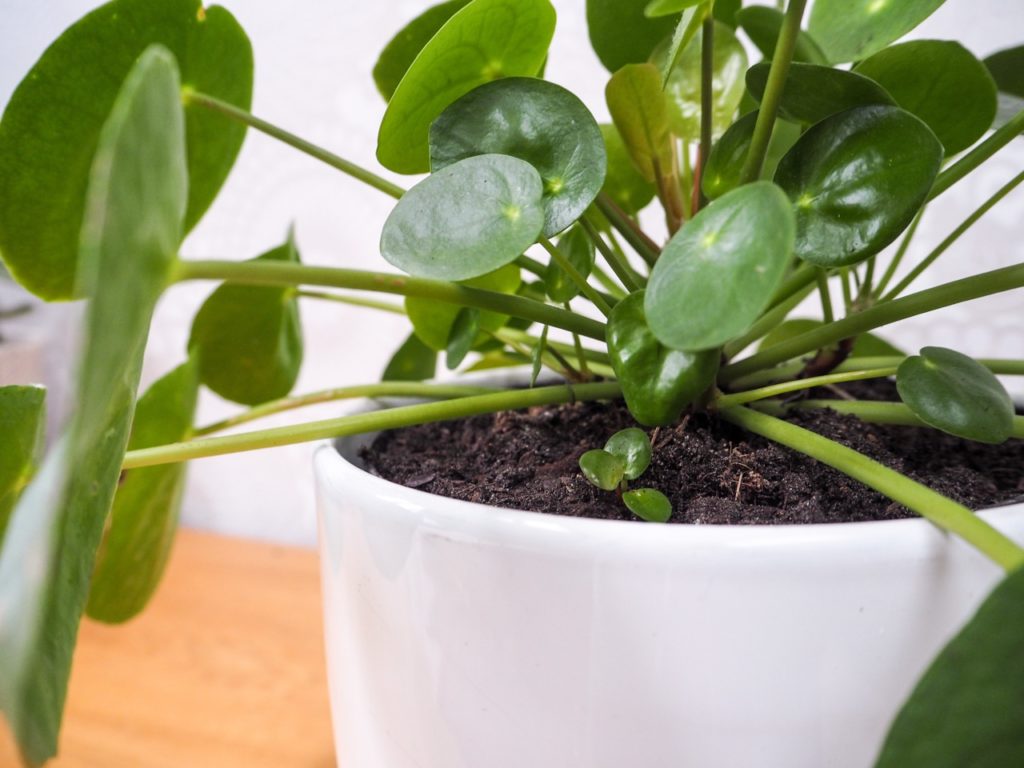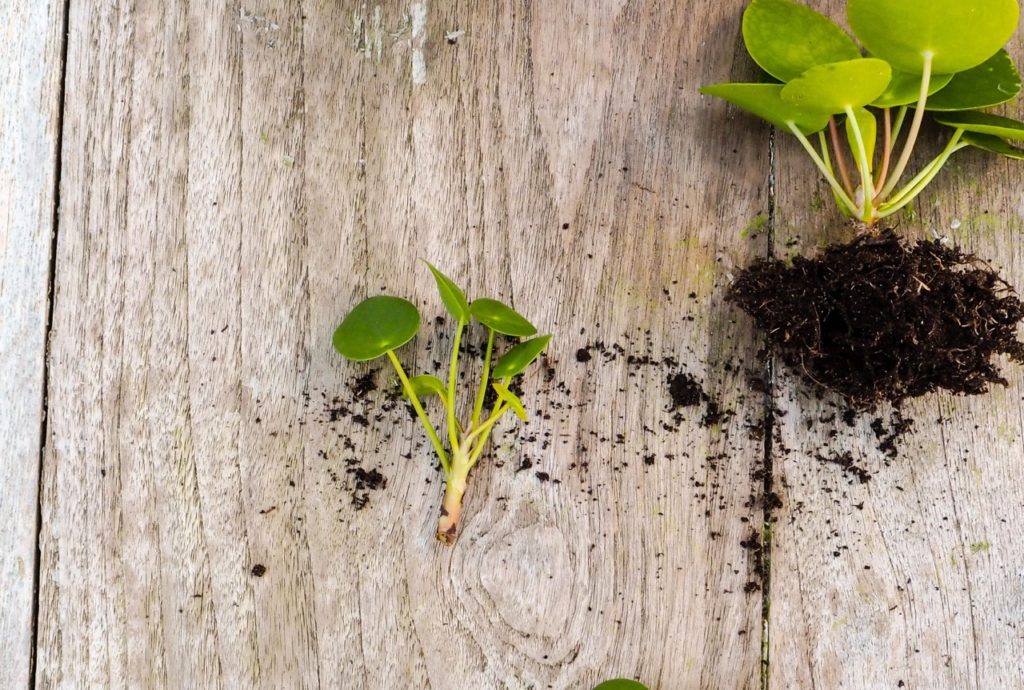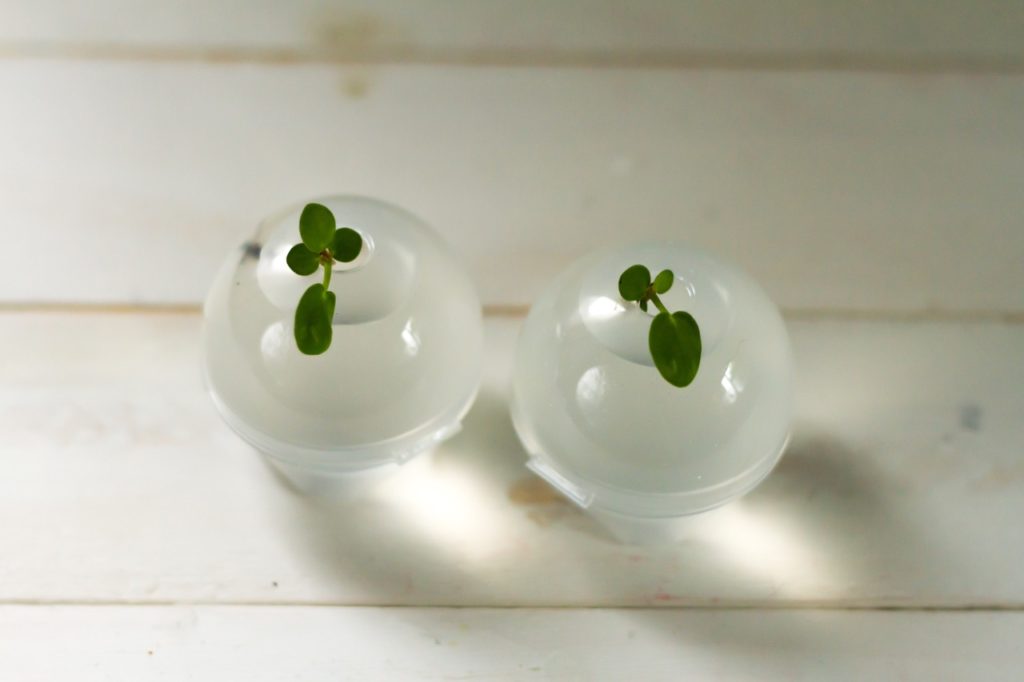Propagating Chinese Money Plant – Look Out For Little Offsets At The Base Of Your Plant

HOUSEPLANTS > PILEA-PEPEROMIOIDES > PROPAGATION

Elizabeth is a Permaculture Garden Designer, Sustainability Consultant and Professional Writer, working as an advocate for positive change. She graduated from the University of St. Andrews with an MA in English and Philosophy and obtained a Diploma in Applied Permaculture Design from the Permaculture Association.
Reviewed By DAN ORI

Dan has over 27 years’ under his belt caring for plants and gardens. Working as a Horticultural Instructor and Consultant, he draws on a diverse range of experience that includes working as a Head Gardener, Tree Surgeon, Garden Centre Trouble Shooter, and writer of academic papers. Dan has a Level 3 Diploma in Horticulture and is currently a candidate for the RHS’s most prestigious award – The Master of Horticulture.
IN THIS GUIDE
CHINESE MONEY PLANT GUIDES
Curling Leaves
Discoloured Leaves
Propagation
Repotting
The Chinese money plant is a houseplant that is pretty easy to grow successfully indoors in the UK and is highly prized for its rounded lush leaves and compact growth habit.
Fortunately, it is relatively easy to propagate a Chinese money plant by looking out for the little offsets that form around the base of the parent plant and extricating them.

However, on a plant where offsets have not emerged, you can also propagate these plants by means of leaf cuttings.
To propagate a Chinese money plant from leaf cuttings:
- Identify the leaves to take as cuttings.
- Using a clean, sharp little craft knife or similar – cut leaves from the main stem, making sure that you retain a heel of the brown material at the end of the leaf stalk.
- Place the cuttings into water to root, replacing the water frequently.
- Once roots are 1-2 inches long, transplant them into pots filled with a moist yet free-draining growing medium.
- Once the new growth has reached a few inches tall, you can remove the original leaf, potting on your new little plant as required as it continues to grow.
Each of these steps is explained in more detail below.
| Difficulty | Easy to medium |
| Equipment Required | Sharp knife, pots, growing medium, glass |
| When To Prune | April-June |
1) Choose Your Leaves
First of all, select some leaves from an existing Pilea peperomioides plant to use for your leaf cuttings.
You should select healthy leaves that are neither too young nor overly mature, but somewhere in the middle for best results.
2) Take The Cutting(s)
When taking the leaves off the existing plant, it is important to understand that for cuttings of this type to root successfully, they must be removed from the parent plant with a small section of the brown stem tissue still attached.

Trace the stem of the leaf down to the main brown stem and carefully use a sharp knife to remove this, with a small sliver of the brown material of the main stem intact.
3) Place Cutting(s) In Water
Next, take your leaf, with its stem and the heel attached, and place the stem into a glass of water.
You can use string, clips or special holders to keep the leaves themselves up and out of the water while the heel from which roots will form is in contact with the water below.

Another strategy involves placing a plastic film over the top of a glass and making a small hole within it to poke the leaf stem through.
Place the container with water in a light, bright location and change the water regularly to prevent any issues as you wait for roots and new growth to emerge.
4) Pot Up Your Cutting(s)
After a while, you will see roots begin to grow from the cutting and new growth should emerge from the base.
Once the roots are growing strongly and are around 1-2 inches long, you can remove the cutting from the water and place it into a pot filled with a suitably moist yet free-draining potting compost.
5) Remove The Original Leaf
When in its new pot, the new growth at the base of the original cutting should continue to grow.
Once this new growth is a few inches tall, it has become a new plant.
“The water propagation system is very effective if you regularly change the water,” says Dan Ori, a Master Horticulturist.

“I have had good success propagating directly into high peat-cutting composts in the past, but now I am growing peat-free, I use a dampened mix of one part fine vermiculite, one part coir and one part fine compost.
“If I am not using a propagator, I place a plastic food bag over the top using an elastic band to fix the bag around the pot.”
The original leaf of your cutting can, once the new plant is well rooted and growing strongly, be removed.
The new plant can be potted on as necessary as it grows.
